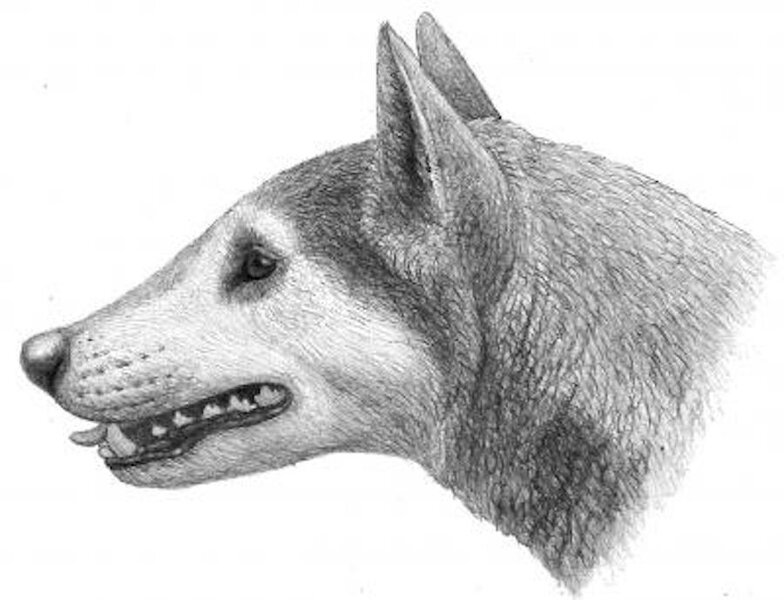12-million-year-old fossil points to 'bone-crushing' North America dog
Loading...
There’s a new dog in town, or at least there was millions of years ago.
Researchers have unearthed a 12-million-year old fossilized tooth in Maryland that could indicate a new species of dog that roamed the ancient East coast of North America.
The fossil definitively belongs to a member of the extinct dog subfamily Borophaginae, known informally as “bone crushers,” due to the typically strong jaws and large teeth the animals used to possess, similar to modern hyenas.
But besides the strong jaws, why are scientists excited about the enigmatic canine evidence? The fossil adds significantly to a small collection of similar fossils.
"Most fossils known from this time period represent marine animals, who become fossilized more easily than animals on land," lead author Steven E. Jasinski, a student in the Department of Earth and Environmental Science in University of Pennsylvania's School of Arts & Sciences, said in a press release. "It is quite rare we find fossils from land animals in this region during this time, but each one provides important information for what life was like then."
Because of the rarity of similar fossils of land-based animals, the recently unearthed fossilized tooth could be crucial for filling in blanks for scientific research into what North America’s East Coast was like during prehistoric times.
Fossilized teeth give clues about what the creature ate and what the environment the host animal lived in was like, paleontologist Neil Shubin told PBS in a video interview.
The fossilized tooth involved in the recent study may have unveiled a previously unknown species. It was found by an amateur along the beach of Choptank Formation in Maryland's Calvert Cliffs region, according to the press release. The Smithsonian Institution first gained access to the tooth and it appeared to be a generic sample from a known species of the borophagine family, as the area had previously revealed bones from a species known as C. marylandica.
When Mr. Jasinski and his advisor Prof. Peter Dodson, from the University of Pennsylvania compared the new tooth to previous fossils found of C. marylandica, the two found notable differences, particularly in the ocular surfaces, where the bottom teeth and top teeth meet. This led to the conclusion that the tooth represented a new species.
“Even so, the Choptank Formation material still offers two possible scenarios regarding its identification,” the study states. “In one, its geographic and stratigraphic provenance could imply that it belongs to ?C. marylandica.... The second possibility, and the one believed to be most probable, is that a distinct cynarctin borophagine is present in the Chesapeake Group in strata younger than the type specimen of ?C. marylandica.”
Despite the official hesitation in declaring a new species outright, the extinct coyote-sized dog has an official name Cynarctus wangi, named for Xiaoming Wang, curator at the Natural History Museum of Los Angeles County and a renowned expert on mammalian carnivores.
“Bone crushers” lived across North America between 10 to 30 million years ago, with the last remaining members of the family lasting as late as 2 million years ago.
The scientists behind the study believe C. wangi was likely one of the last surviving species of the Borophagine dogs. Their extinction was likely a result of being unable to keep up with their relatives: wolves, coyotes, and foxes.






